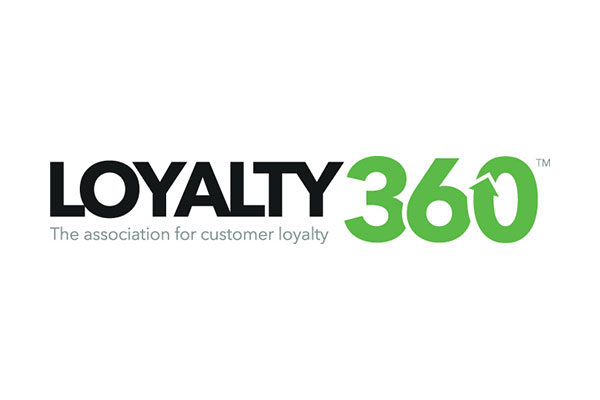[ad_1]
Today’s loyalty programs go above and beyond a monetary reward and strive to create an emotional connection with their customer base. However, to develop long-lasting customer relationship, data – especially the right data – is critical.
The mismanagement of data can not only impact the customer experience, but also impact operations. The ability to centralize the information into a single view of the customer allows the company to begin to put loyalty rewards rules in place.
“We want our platform to support in a self-service capacity,” says Joe Pino, VP of Strategy and Solutions, for Clutch. “The ability for business users to create a great experience for their customers without having to engage with the technology product teams is key.”
Personalization in Customer Loyalty Takes Center Stage
Personalization of customer loyalty programs is front and center in today’s market, and the ability to impact customer loyalty is paramount to the people who drive and run these customer loyalty programs.
“Personalization is more than just putting someone’s name on an email,” says Pino. “It’s more than just remembering their favorite color, but really applying that to every engagement you have with that customer.”
With all the data available, brands are expected to drive personalization practices. Consumers give up more personalized data with the expectation that the brand is going to use that information to enhance the customer shopping and buying experience.
Pino explains that the data tracked by Clutch is analyzed from a rules-based logic. When to send the welcome email, when to send the thank you, and what product to promote, are all examples of the way machine learning is utilizing the data collected.
Says Pino, “Clutch systems are in place to make life easier for the marketer while simultaneously optimizing the experience for the customer.”
No matter how the customer engages, whether by email only or fully involved in the loyalty program, personalization is expected to be driven across each of the platforms where they interact. Questions can be answered from when to communicate to customs to what to communicate and even when not to communicate with them. Relationship building is first and foremost.
Pino stresses, “Even your best customer doesn’t shop with you every day, so why do you try to get them to buy every day?”
Using AI and Machine Learning Optimizes Loyalty Programs
While many companies operate some form of customer loyalty program or strategy, most are in the early to mid-stage development of personalization with their customers. “Everyone knows they should be doing it,” says Pino. “But even those who do it well have opportunities to grow across channels. Personalization is more than just an offer, more than just an email. It has to be with every touchpoint. Whether it’s as simple as a transaction notification or a receipt they receive after a purchase.”
While marketers know there is a need for personalization, picking the right technology to implement this strategy is a crucial starting point. One popular technology playing a big role in personalization is artificial intelligence (AI) and machine learning.
According to Pino, machine learning and AI are valuable in developing rules-based logic. There is a move away from the standard one-size-fits-all communications. Instead of one blanket email to all customers after 90 days, machine learning can assist in creating very targeted forms of communication for the optimal outcome.
Adds Pino, “The models are self-learning in the product. The machines start learning as soon as we get data into the product.”
AI and machine learning are also used to enhance personalization efforts and make a measurable impact on customer loyalty. At Clutch, they use machine learning around lifecycle management to measure at-risk customers.
Pino explains, “You don’t always email a customer after 90 days, Hey, we missed you. Our at-risk indicator is personalized, so one person may be at risk after day 21 and another customer is at risk at day 75. It really becomes personalized so the tactics in which you engage with the customer are, too.”
There is a similar benefit to tracking customer churn. Machine learning can measure the inactive customers inform the brand when to best forgo communications with that customer. There is no need to waste efforts where they are not making an impact.
Now is the Time to Tie Segmentation, Personalization and Customization into Customer Loyalty Strategies.
Pino stresses the importance of hitting all of the touchpoints. Knowing where the customer is on their journey, when they are and are not shopping, what they are and are not buying, is key to then tying that information in with other experiences.
“If you aren’t segmenting, you are missing out on an opportunity,” Pino says. “If you don’t understand your customer’s behavior, you are not going to achieve personalization, and you’re not going to live up to the promise that customers are expecting these days.”
Brands Measure Success of Personalization Efforts
“Customer lifetime value is the number one metric you can track,” says Pino.
Additionally, with customer engagement top of mind, it is important for brands to look at unsubscribe rates, or if customers are opting out of communications. One primary KPI to track is lifetime spend, as well as whether overall customer value increased or decreased through each touchpoint.
Personalization Can Start Simple. There is Always Room to Grow.
Setting the right goals is one of the major challenges in loyalty customization. A company can have all of the proper tools in place, but for a true loyalty strategy, they need a plan and the right technology in place to carry out that plan.
Pino stresses the importance of just getting started. “Get a plan and vision where you want to go. Start somewhere and you can always evolve. Personalization is a big undertaking that can start simple and grow, especially with the addition of IA and machine learning.”
To hear more of Pino’s and Clutch’s perspectives, watch the video interview here.
[ad_2]
Source link




